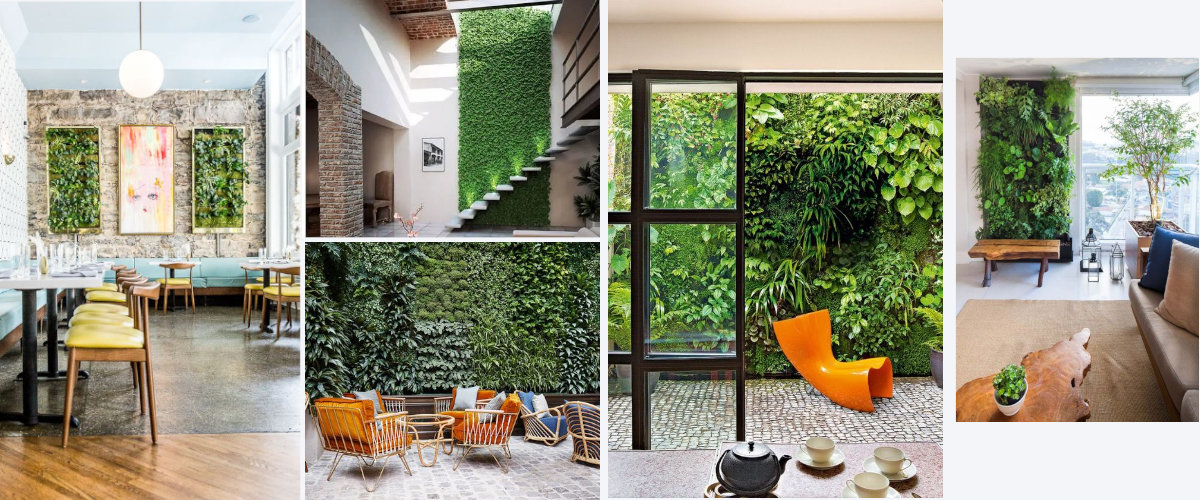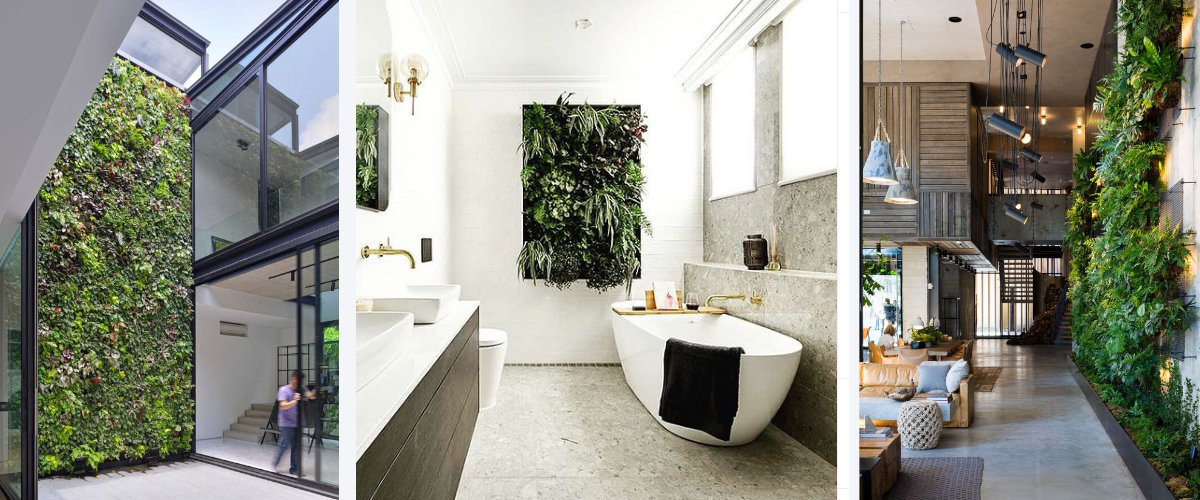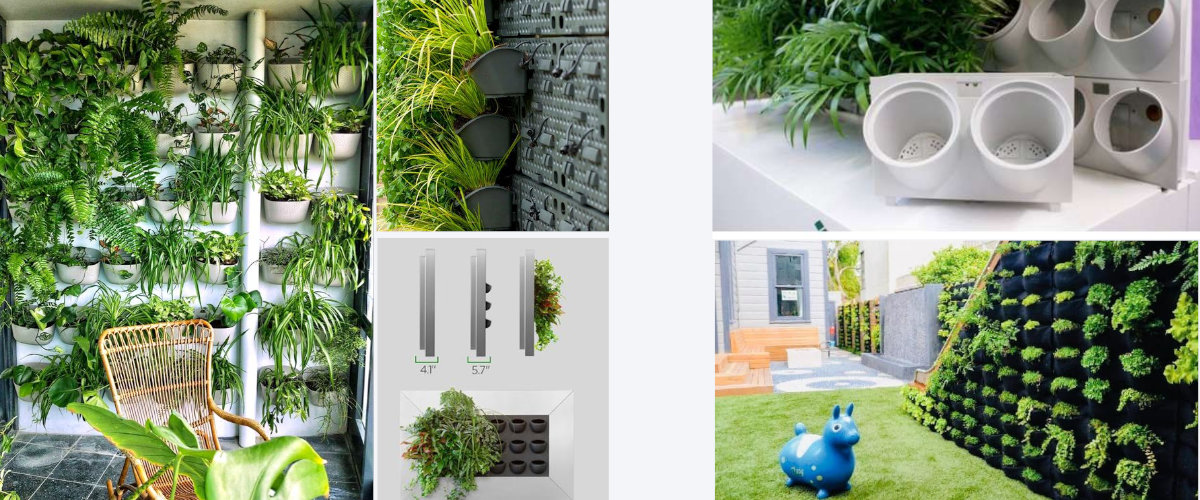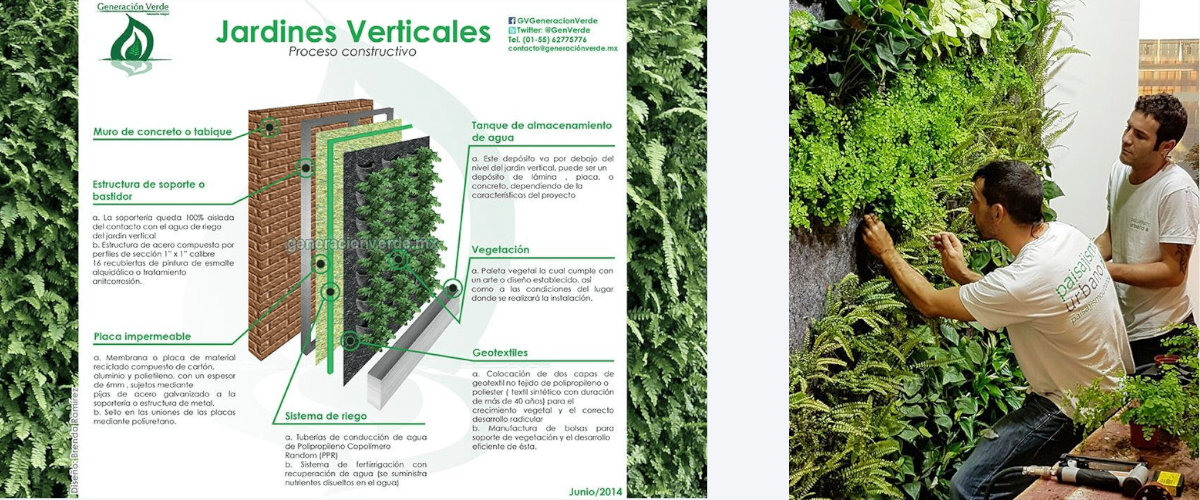
The vertical gardens they have great aesthetic value and they provide numerous benefits to both indoor and outdoor spaces. Its installation is more and more frequent in facades, terraces and interior walls and it is that when one does not have a large outdoor garden to cultivate, vertical gardens become a great proposal so as not to give up the many benefits that plants provide us.
Light, water, and good drainage are key to running a vertical garden. They will be of little use, however, without an adequate solid structure to support it and a suitable choice of plants. We are talking about all this today so that you can learn how to make a vertical garden.
What is a vertical garden?
A vertical garden is a vertical installation covered with plants that are grown in the structure itself. Vegetable walls, in short, that can be used in different constructions both interior and exterior and emerge as a new concept that integrates vegetation and architecture in a natural way.

This type of plant walls in addition to a great aesthetic value provide, as we have already mentioned in the introduction, other important benefits that make them a very interesting option to decorate both interior and exterior spaces:
- Aesthetics. Gardens provide volume and beauty to walls and walls, increasing the value of spaces, whether they are indoors or outdoors.
- They reduce noise pollution.
- They help to purify the environment thanks to the production of oxygen.
- Thermally insulated. They reduce the indoor temperature in summer and maintain it in winter.
Despite its benefits, this type of plant construction has not become popular even in private interior spaces. These are probably to blame the high cost of installation of the vertical gardens of a professional nature, the consumption of the water and the maintenance derived.
How to create a vertical garden
You could build a vertical garden yourself small or medium size thanks to the modular proposals that exist in the market for this. However, when it comes to covering large spaces, the best option is always to bet on a professional hand. Whatever option you choose, here are the bases for making a vertical garden.

Choose the place
You probably have already thought about the place where you would like to install a vertical garden, but does it meet the necessary conditions for it? Plants require a number of conditions to develop and there are important aspects that we should not overlook as they are ...
- Light. We need to find a space with the greatest and continuous exposure to the Sun for the forest (Beware of the noon sun). For an outdoor garden, the minimum should be between 5 and 6 hours of direct sunlight per day. In the case of indoors, if possible, direct natural light, and if we cannot, we must choose plants that need little light. West and east orientation
- Water. We need to locate the vertical ecosystem in an area that we have access to a water intake; that is to water or connect the irrigation and drip system.
- Accessibility. Being able to maintain and work the living wall comfortably is essential. Forget about strange structures and shapes that hang from the ceiling, they are only for movies!
Choose the type of structure
Know what options exist in the market to create a vertical garden, what technologies and systems can we use it is key to making a good decision. Both must always fulfill basic functions: tightness, water retention capacity, drainage, consistency, nutrition and filtration.

Although the options are numerous, we have classified them into two groups. The first one focused on a simple and affordable installation of small or medium dimensions; the second to a professional installation for medium or large green walls with minimal maintenance.
- Modular system. They are modules in the form of drawers or geotextile pockets that we can find in the market with different shapes and sizes. These are normally mounted on a structure that later allows them to be anchored to the wall. The perfect option to create small gardens with our own hands that we will be able to expand in the future.
- Multilayer structure with automatic irrigation. A professional system that uses different components for its installation; generally, a fixed aluminum support, a layer that guarantees insulation and optimal conditions for plant growth, including automatic watering, and a geo-textile system that houses the plants. The system can be hydroponic -without substrate- which requires sophisticated irrigation equipment that provides correct management of water conditions and the use of fertilizers.

Select the plants
There are numerous species capable of adapting to the vertical garden. We will have to choose, however, those with characteristics that match the design criteria sought. There are many characteristics to take into account and we cannot talk about all of them, but we can talk about three essential criteria when designing a vertical garden:
- The growth habit of the plant. Cascading, sloping, climbing ... This habit will determine its position within the dynamics of the garden. A large plant can create a deep shadow under itself, thus preventing others from thriving.
- Light level. In indoor gardens, normally, there is more light in the upper part of the surface, which will force us to adapt the planting to the lighting needs of each species.
- The humidity level. As the water gravitates, there is more humidity in the lower part of the vertical garden, so the plants with the greatest water needs should be located in the lower part.
As for plants, they can combine different plants in order to create attractive compositions that adapt to the needs of the space. Try to choose species that you know, so its maintenance will be easier for you. Or do you think they stand alone?